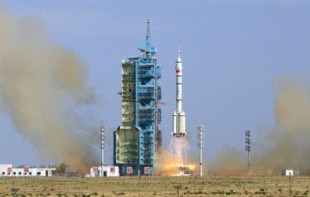An international group of astronomers has made the most accurate measurement ever of the distance to another galaxy. Galaxy NGC4258 in the constellation Canes Venatici is 7.2 ± 0.3 megaparsecs away according to measurements of the orbital motions of gas clouds around the centre of the galaxy centre (Nature 400 539). The result could have implications for the age, geometry and fate of the universe.
The team were able to measure the distance because NGC4258 is one of 22 nearby galaxies that have active nuclei consisting of a supermassive black hole (over 100 million solar masses) surrounded by a thin rotating cloud of gas and dust. As the cloud rotates, friction heats the dust and gas, exciting the molecules in the cloud. This eventually causes the molecules to act as masers (the microwave equivalent of a laser) and release microwave radiation. By assuming that the masers rotate around the disk, the astronomers could plot their position with a network of radio telescopes known as the Very Long Baseline Array. From three years of observations and computer simulations they were able to calculate the absolute distance to the galaxy.
The next step, they say, is to use the Hubble Space Telescope to look for a Cepheid variable – one of the ‘standard candles’ of galactic measurements – in NGC4258. Once a Cepheid has been found, its real and apparent brightness can be calculated. This will enable astronomers to recalibrate all their extragalactic distances and hence refine estimates of the age of the universe.



